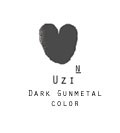
|
Of course, Lerner's familiarity with horseshit does provide her with
another theme to explore in her Urban Decay project. Inure yourself to
manure, and you eliminate what is often the most daunting
obstacle in the pursuit of a quick sale:
your own conscience. Lerner cannily riffs on this
theme by attaching an intentionally gratuitous environmental perspective to Urban
Decay's product pitch: the company pledges to "minimize packaging
to avoid further damage to the environment, and to
use non-formaldehyde, toluene-free formulas for nails and
aloe vera-rich formulas for lips, both of
which use ingredients which are kind to the Earth and have
not been tested on animals."
This sudden kindness to the Earth and the creatures that inhabit it
contradicts Urban Decay's "celebration" of urban degeneration, of
course; anyone who's ever spent much time in urban environments
knows that a squashed, rotting pigeon is often the
difference between a humdrum cityscape and a sublime
spectacle of cosmopolitan putrescence. But Lerner, in another
pointed jibe at consumer culture, forsakes coherence
for the chance to push as many marketing hot buttons as possible.
In doing so, she reveals how in a world of hyperconsumption,
logic and context have no value anymore. It doesn't matter
that Urban Decay contradicts itself, Lerner suggests, because Urban Decay isn't about
making sense. It's about surfaces, fleeting impressions, one-second
masterpieces framed in the window of a BMW as it speeds
past the projects.
|





